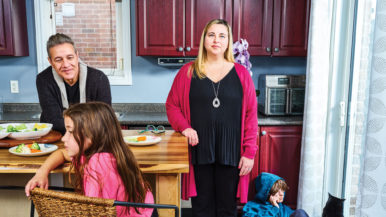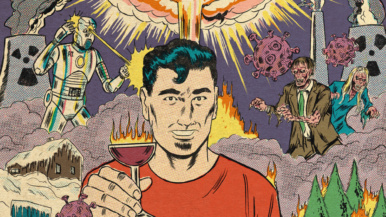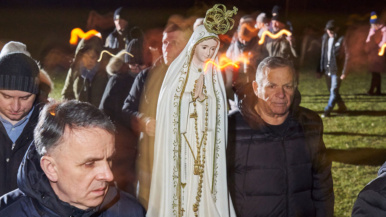The post-pandemic future: The film and TV industry will go virtual—actors and sets included

Paul Bronfman is chair of Pinewood Toronto Studios and co-chair of William F. White International Inc. equipment rental
Over the past few years, Toronto has made good on its nickname of Hollywood North. Netflix is setting up a production hub here. There’s a mad dash for studio space, with new sound stages popping up to meet the endless demand. And in 2019, the province’s film and television industry reached an all-time high, generating $2.16 billion and supporting 44,540 jobs. Then came Covid, and like many industries, Toronto’s robust production pipeline froze.
As the industry has adapted to our new normal, we’ve realized that content production in Toronto will never be the same. Post-Covid, the next big transformation we’ll see is a move from in-person shooting to remote production. This change could be one of the best things to ever happen to our industry—financially, logistically and creatively.
Digital wizardry will be the norm, and many productions will go virtual. Previously, LED video walls were used to create realistic moving backgrounds for hard-to-wrangle sequences. Today, entire virtual worlds can be built from scratch, featuring high-resolution sets created using LED video walls and computer-generated backgrounds to separate actors from each other and the crew. These virtual sets will not just be the purview of big-budget productions, either. Independent and emerging filmmakers will continue to push the boundaries and find ways to innovate with smaller production budgets.

Even performances will happen remotely: the industry is close to creating sets that can add actors to a scene after they film their parts in their home studios. Through the use of visual effects, a remote actor’s face could be digitally superimposed onto a body double in post-production. The same thinking will apply behind the scenes. Equipment rented on set will have remote camera heads and cranes. These long-reaching tools are completely programmable and can provide adequate distance between actors and crane technicians. Once shots are set up and programmed, operators and other members of the production crew can stand back while the camera does the work for close-up shots. Planning and programming shots before involving key talent can significantly shrink overall production times, allowing for a much faster workflow.
This kind of remote thinking will involve not only the cast and crew, but production executives as well. In the before times, members of the production team would gather around a monitor to watch the action unfold on set. Going forward, they’ll use virtual video assist technology: tablets that are synced in real time, allowing for direct and simultaneous communication between executives in L.A. and those on location. By maintaining direct digital contact across the entire production crew, approvals can be facilitated more quickly, leading to a more efficient and productive set.
Sets won’t disappear, but these changes will reduce the number of people who have to be on them, streamlining the filmmaking process and establishing more efficient and cost-effective ways to capture content and develop stories worth sharing. The sets that remain will incorporate aggressive sanitization equipment, including multiple handwashing stations, temperature check-in stations, UV misters to kill germs, and powerful medical-grade air scrubbers to kill pathogens and purify the surrounding air.
Ever since the shift from silents to talkies, from black-and-white to Technicolor, from hand-painted sets to CGI, this industry has always been about innovation, creativity and good old movie magic. We can’t wait for the digital revolution.

































